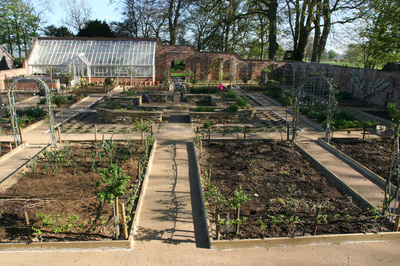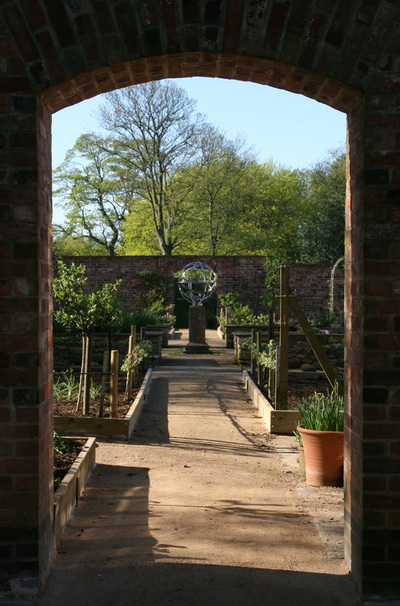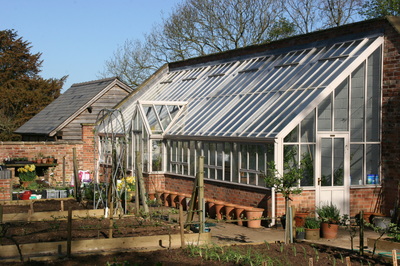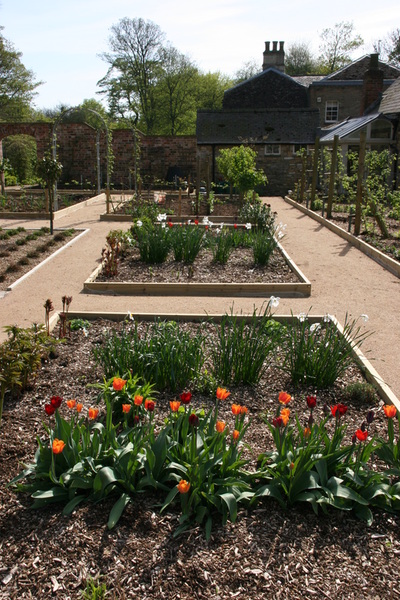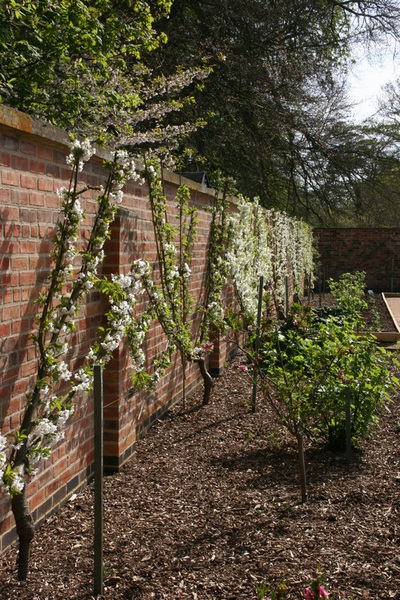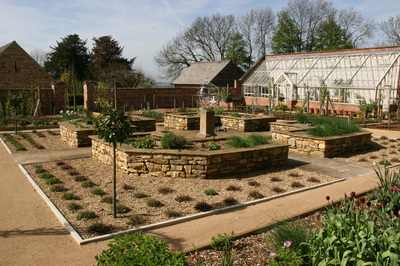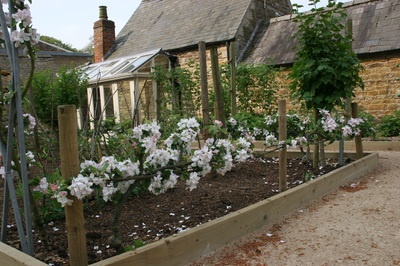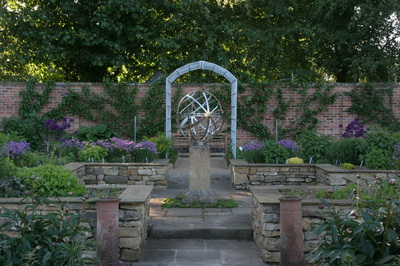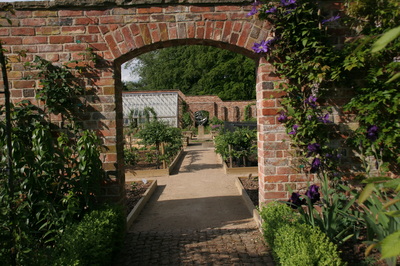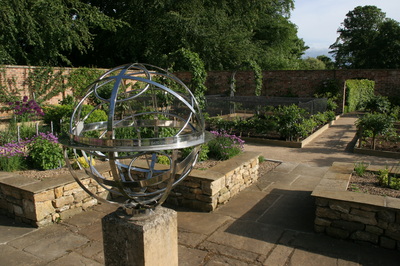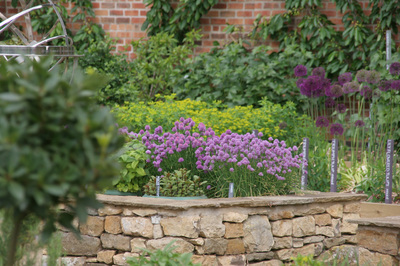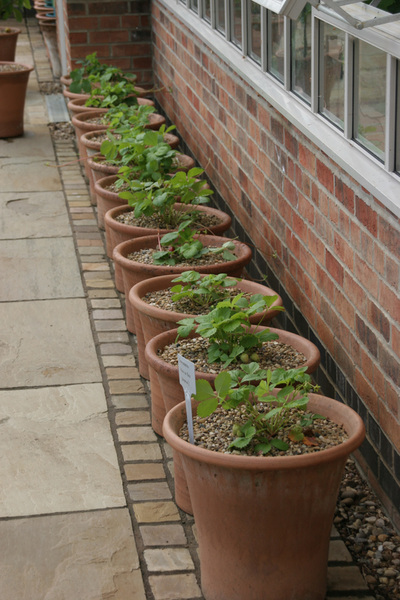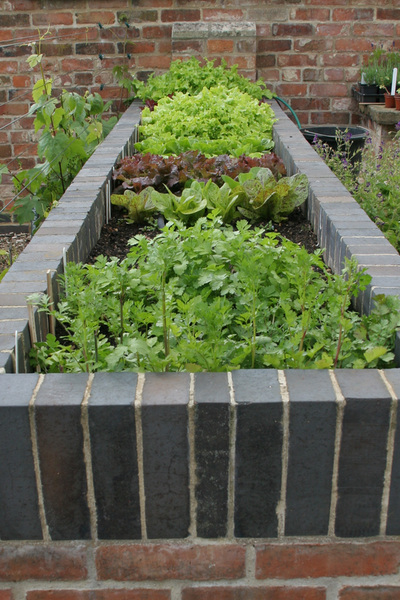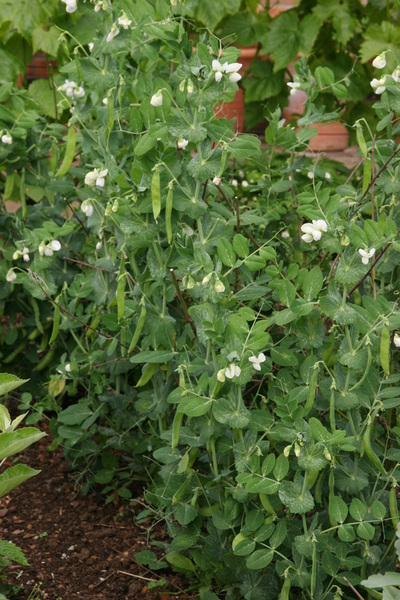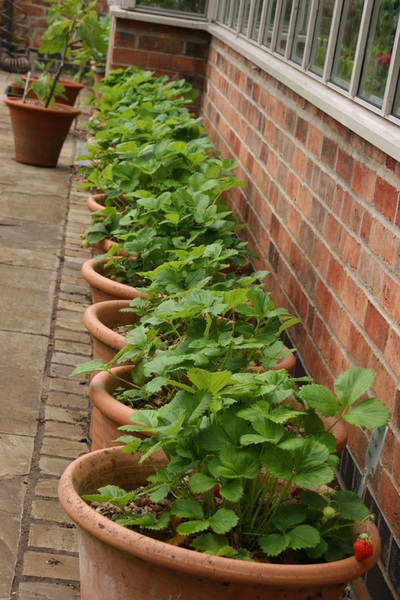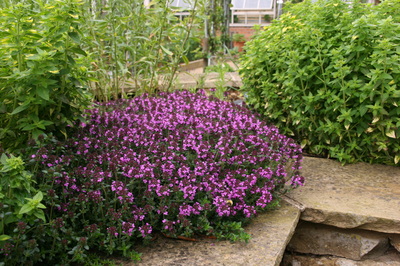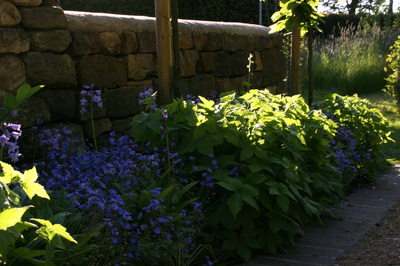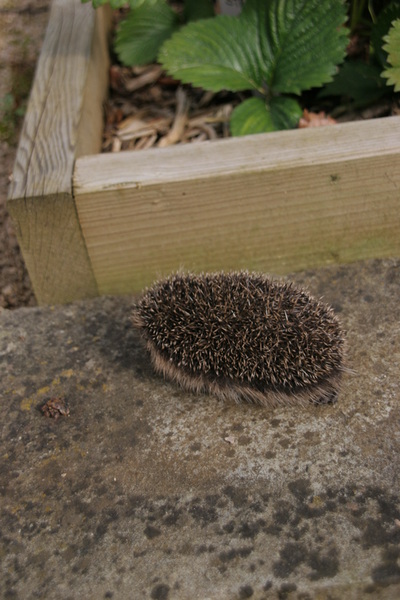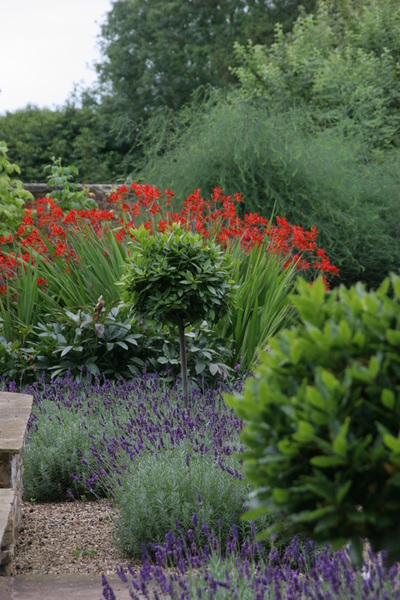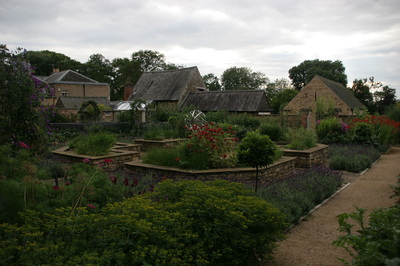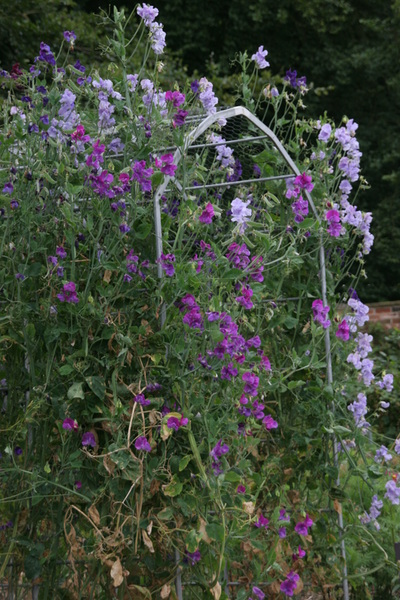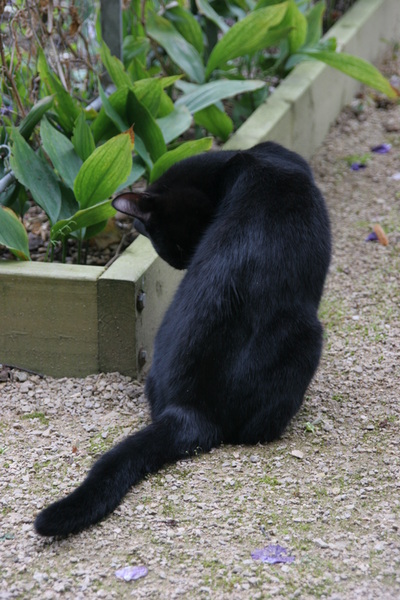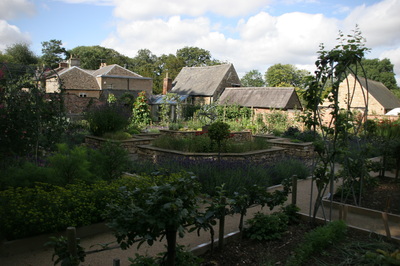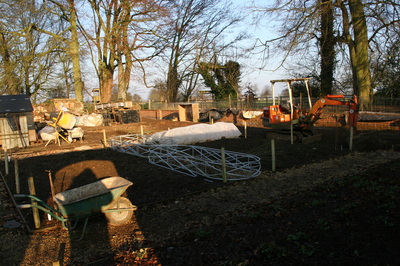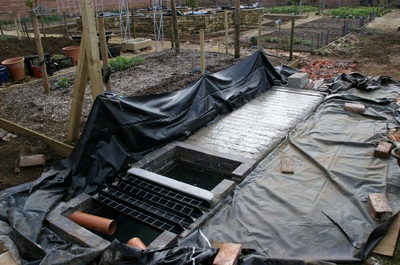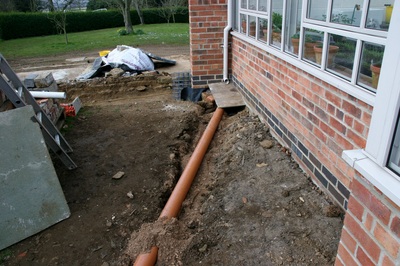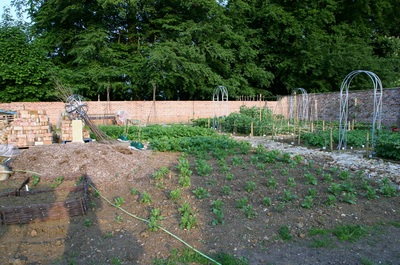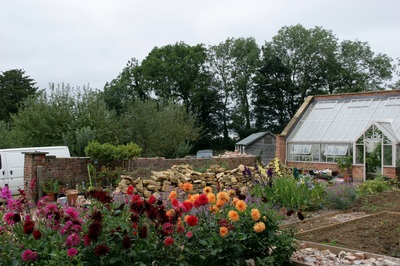The Walled Garden

The Walled Garden is 33 long by 25 m wide (slightly more than a fifth of an acre). It was a very overgrown paddock, full of nettles and brambles, contained within a low stone/rubble wall, two modern redbrick walls which leaned inwards and a long brick toilet block left over from the war (when troops camped behind Burley House). We intended to replace only the low stone wall at the south end, but somehow ended up rebuilding and squaring off the whole garden.
At the centre of the garden is a David Harber armillary sphere sundial, surrounded by four raised stone beds which provide the drainage needed for herbs. The herb garden is surrounded by gravelled lavender beds (originally Imperial Gem, but now all Hidcote) and four half-standard bay trees.
To the east and west of the herb garden are two pairs of cutting beds, planted with spring and summer bulbs, annuals, perennials (peonies, phlox, euphorbia, wallflowers). The beds on the east side of the garden are joined by a galvanised arch where we grow sweet peas.
Three of the beds (those facing north, west and south) under the walls are planted with soft fruit bushes, particularly blueberries and blackcurrants. These sit in front of the fan trained fruit trees (apricots, plums, cherries, gages and pears) growing against the walls. The fourth bed houses raspberries and asparagus . All the beds are edged with rows of strawberry plants.
The vegetable beds are divided into four pairs, which we rotate on a four-yearly basis to reduce problems with pests and low nutrient levels. The beds are edged with step-over apple trees and alpine strawberries. Each pair of beds is joined by simple galvanised arches with plums, pears or apples trained over and has half standard soft fruits (gooseberries, red and white currants) in the outside corners.
The vine-house sits against the south facing wall and is home to permanent plantings of grapes, peaches and nectarines, with tomatoes, peppers and cucumbers added in the summer. There is also a raised salad bed which allows us to control slugs, and which is irrigated every night from an underground water store, replenished by the collection of rain from the greenhouse roof.
At the centre of the garden is a David Harber armillary sphere sundial, surrounded by four raised stone beds which provide the drainage needed for herbs. The herb garden is surrounded by gravelled lavender beds (originally Imperial Gem, but now all Hidcote) and four half-standard bay trees.
To the east and west of the herb garden are two pairs of cutting beds, planted with spring and summer bulbs, annuals, perennials (peonies, phlox, euphorbia, wallflowers). The beds on the east side of the garden are joined by a galvanised arch where we grow sweet peas.
Three of the beds (those facing north, west and south) under the walls are planted with soft fruit bushes, particularly blueberries and blackcurrants. These sit in front of the fan trained fruit trees (apricots, plums, cherries, gages and pears) growing against the walls. The fourth bed houses raspberries and asparagus . All the beds are edged with rows of strawberry plants.
The vegetable beds are divided into four pairs, which we rotate on a four-yearly basis to reduce problems with pests and low nutrient levels. The beds are edged with step-over apple trees and alpine strawberries. Each pair of beds is joined by simple galvanised arches with plums, pears or apples trained over and has half standard soft fruits (gooseberries, red and white currants) in the outside corners.
The vine-house sits against the south facing wall and is home to permanent plantings of grapes, peaches and nectarines, with tomatoes, peppers and cucumbers added in the summer. There is also a raised salad bed which allows us to control slugs, and which is irrigated every night from an underground water store, replenished by the collection of rain from the greenhouse roof.
April
May
June
August
September
January
Walled garden construction (2005 to 2008)
